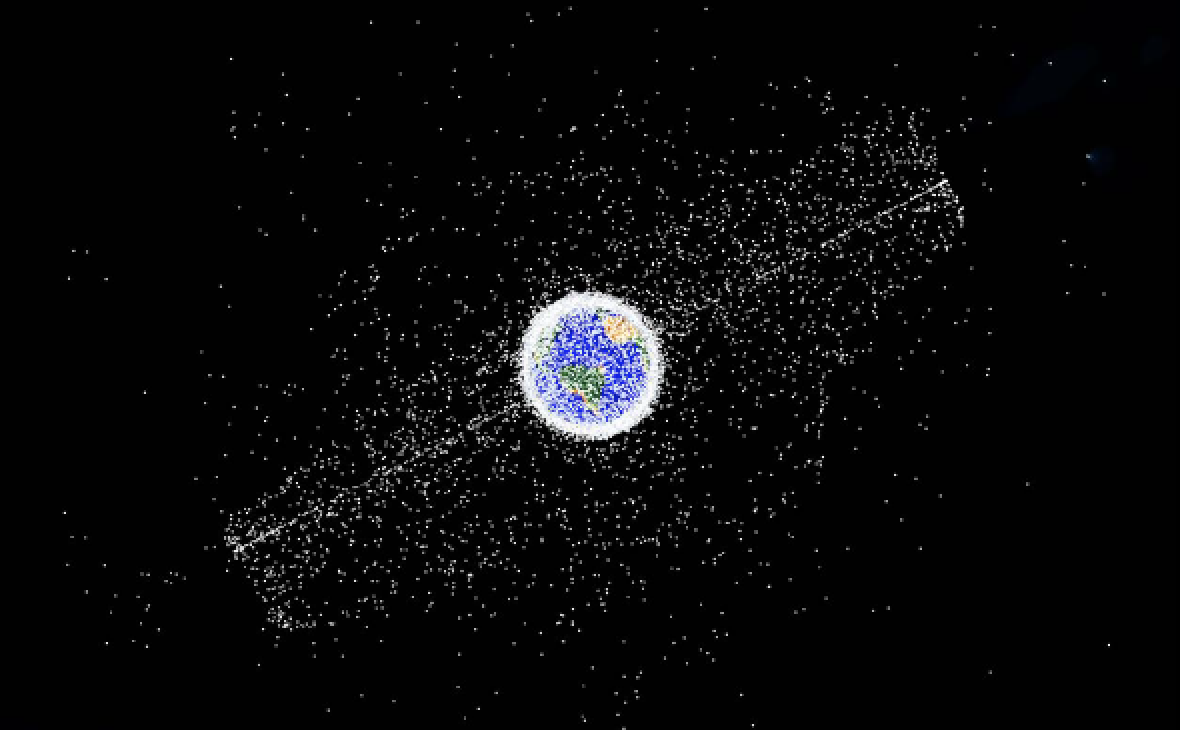As expected, 2023 has followed suit of recent years, with significant growth continuing to drive headlines within our industry. Unsurprisingly, Low Earth Orbit (LEO) is mainly responsible for the big changes on-orbit; the number of active satellites in the orbital landscape is now approximately 8600, with more than 90% of these in LEO.

As the use of space continues to be the focus for many organizations, the urgency for the resolve of challenges surrounding Space Traffic Management and Situational Awareness increases. This is reflected in incidents we have witnessed this year. In January, the industry saw two pieces of debris travel within six meters of one another in LEO. The ramifications of a collision within orbit would be catastrophic, and this near-miss provef the need to deliver clear, management strategies.
The Current State of Debris
Policies that stipulate end-of-life deorbiting for satellites are now in full swing for many regions. In 2022, the Federal Communications Commission (FCC) adopted a rule that requires satellite operators to dispose of their satellites within five years of mission completion.
This year, the seriousness and weight of these regulations were noted by many space users when the FCC issued its first fine to an organization for violating its anti-space debris rule. The organization has failed to dispose of the decommissioned satellite to the required safe altitude and was, therefore, fined $150,000.
The European Space Agency (ESA) has also recently introduced the Zero Debris Approach that is aimed to ensure the agency generates no new space debris in valuable orbits, to be done by 2030. In July, the UK announced its creation of a Space Sustainability Standard that focuses on measuring and managing, improving satellite repair and retrieval, and instating broader regulatory reviews.
ESA also highlighted that the United Kingdom Space Agency (UKSA) and UK Space Command are developing a joint National Space Operations Centre with cutting-edge SDA technologies at its heart to improve national space surveillance and tracking as well as space traffic coordination capabilities.
Regulations surrounding deorbiting are clearly having an impact on operations; more than 80% of constellation satellites launched in 2022 were inserted into orbits from which they will decay toward Earth in less than two years, once they are no longer operational.
Of course, there are many satellites on-orbit that were launched prior to this legislation and, therefore, without de-orbiting or reentry capabilities. In response to this problem, ESA launched a new method to deorbit such satellites in July of this year.
The ESA’s ESOC mission control team attempted a new method to assist the reentry of an older satellite which lacked reentry capabilities. The assisted reentry of ESA’s Aeolus satellite was successful, with the spacecraft burning up over uninhabited regions of the Atlantic and Antarctica. This is huge progress when considering the impact of defunct satellites on-orbit and the risk they pose to the environment.

STM in 2023
Space Traffic Management is integral to preserving the space environment. This year saw the International Space Station (ISS) perform a maneuver in order to avoid space junk, further highlighting the risk debris poses to operational space vehicles.
According to a report released in August by Research And Markets, the global Space Traffic Management market is expected to experience substantial growth, increasing from a value of $14,053.17 million in 2022 to U26,341.3 million by 2030. With space traffic increasing quickly and beyond anything the industry has ever seen before, STM must continue to be a critical part of network infrastructure.
This year, governmental bodies have continued to make a shift to address STM. The U.S. Government (USG) has recently provided updates on its STM plans, having announced the reintroduction of the Space Safety and Situational Awareness Transition Act of 2023 (downloadable PDF at this direct link for more information regarding the aforementioned act).
The act has established a civil SSA capability under the Department of Commerce, providing new congressional oversight to support spaceflight safety and space sustainability. This follows on from its pilot project at the start of the year in which NOAA’s Office of Space Commerce (OSC) partnered with the Department of Defense to award seven contracts to U.S. commercial space firms for space situational awareness data analysis. The pilot project’s objective was to assess whether commercial offerings could enhance existing government solutions for spaceflight safety mission assurance.
The Space Data Association was awarded one of the contracts to assess the suitability of commercial offerings within the STM field and was able to contribute data from selected satellites in Medium Earth Orbit (MEO) and Geostationary Earth Orbit (GEO). The SDA was also able to deliver important feedback from its operator members following the initial pilot.
In July, the EU Space Program’s Space Surveillance and Tracking (SST) began operations to provide space safety services to more than 190 registered organisations. This new service contributes to the coordination of space traffic by protecting more that 400 satellites from the risk of collision.

It is promising to see that both regulation and investment is being focused to address the challenges surrounding STM and it is our hope that space will become a safer and more sustainable environment as more data is pooled and shared.
The Discussion Continues
For many years, the SDA has called for united action for the sustainability of space. With the number of satellites in-orbit set to increase drastically, this continues to be an urgent need.
As we see governments adopting more responsibility in regards to space debris prevention and management, it is equally important that they deploy a cohesive, multi-national approach to STM. Data sharing is at the core of STM, and governments must prioritize creating a system in which data can be pooled in order to improve our industry’s visual of the STM landscape.
We hope that the work completed as part of the DOC’s pilot project, alongside the conversations had with other organisations this year will ensure that we see strong future collaboration between government and commercial operators for improved safety of flight for the entire community.
www.space-data.org/sda/
 Joe Chan
Joe Chan
Author Joe Chan is the Director of Flight Dynamics at Intelsat and also the Chairman of the Space Data Association. At Intelsat, he oversees the FDS operation and the engineering of more than 70 geostationary (GEO) satellites that Intelsat currently operates. He has been with Intelsat for 24 years. Prior to joining Intelsat he worked at Goddard Space Flight center on the TOPEX/ POSEIDON and Mars Observer projects.

